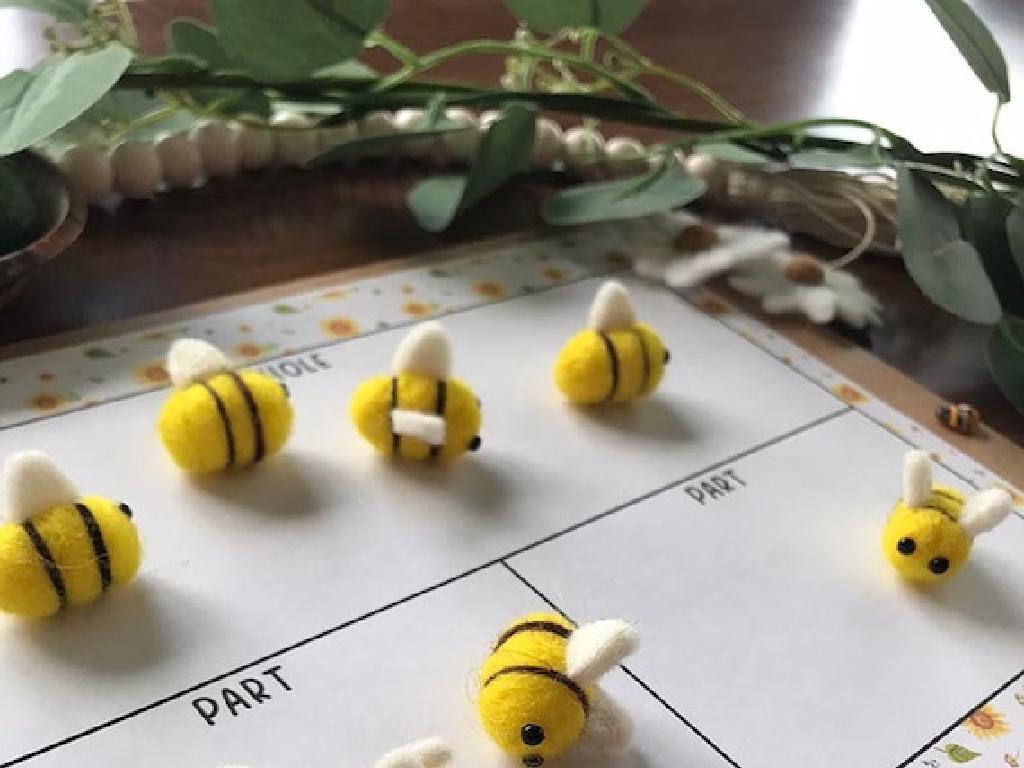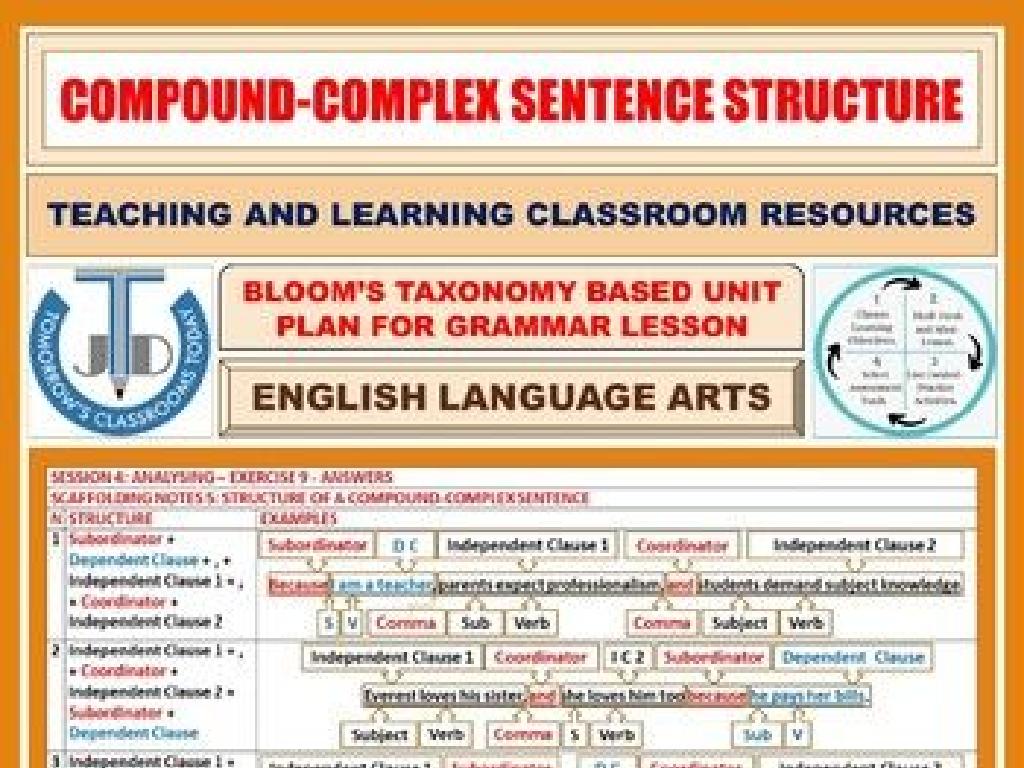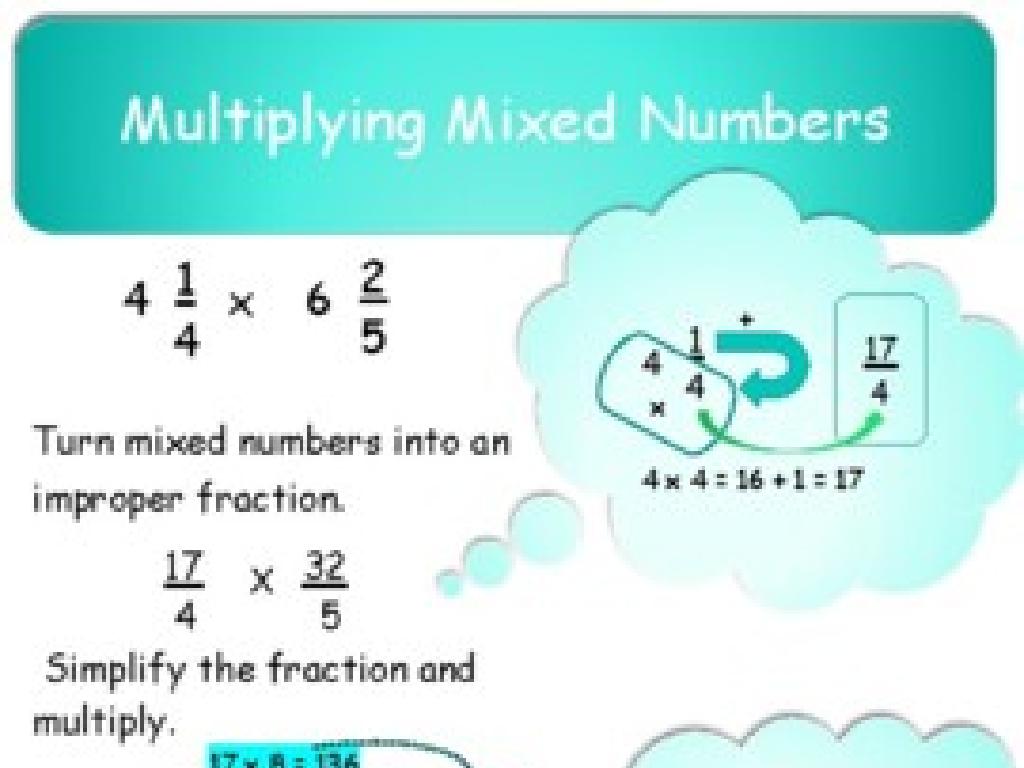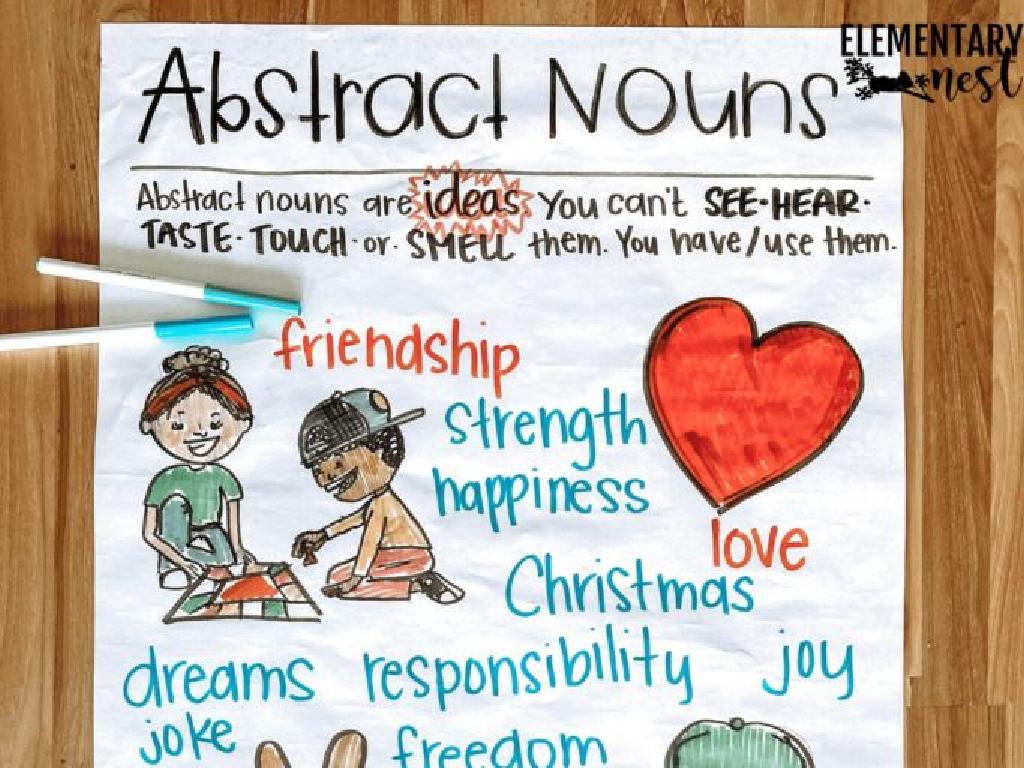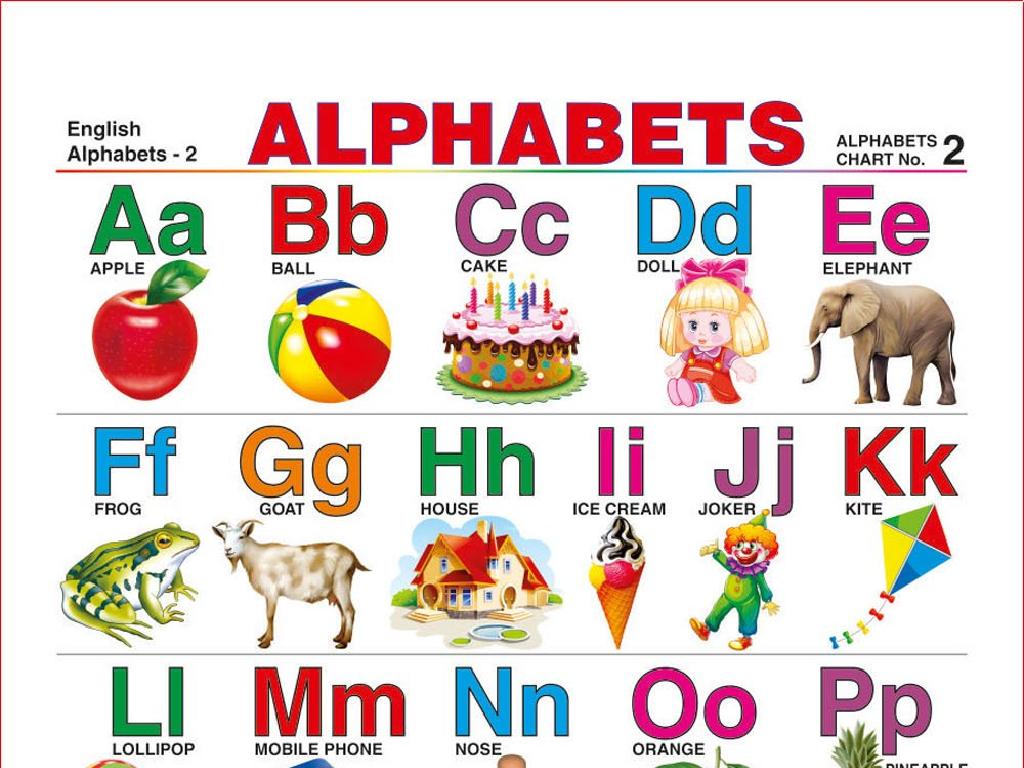Multiply Fractions By Whole Numbers: Word Problems
Subject: Math
Grade: Fifth grade
Topic: Multiply Fractions And Whole Numbers
Please LOG IN to download the presentation. Access is available to registered users only.
View More Content
Multiplying Fractions by Whole Numbers
– Grasp fractions and whole numbers
– A fraction represents a part of a whole; a whole number is a complete unit.
– Learn multiplication of fractions by whole numbers
– Multiplying a fraction by a whole number combines parts to find a new total.
– Real-world application of this skill
– For example, if you have 3/4 of a pizza and you want 2 whole pizzas, how much more do you need?
– Practice with word problems
|
This slide introduces the concept of multiplying fractions by whole numbers, a fundamental skill in mathematics. Start by ensuring students understand what fractions and whole numbers represent. Then, explain how multiplication can be used to combine these two types of numbers, emphasizing that multiplying by a whole number is like adding the fraction to itself that many times. Provide real-life scenarios, such as cooking or dividing items, where this math skill is essential. Encourage students to solve word problems to apply what they’ve learned and to solidify their understanding of the concept.
Review of Fractions: Understanding Parts and Uses
– What is a fraction?
– A fraction represents a part of a whole.
– Numerator vs. denominator
– Top number (numerator) and bottom number (denominator).
– Fractions in daily life
– Pizza slices, measuring cups, and money (quarters).
– Practice with real examples
– Solve problems using fractions from everyday scenarios.
|
This slide is a refresher on the basic concept of fractions, aimed at helping students understand how to multiply fractions by whole numbers through word problems. Begin by defining a fraction and its components: the numerator, which indicates the number of parts, and the denominator, which shows the total number of equal parts in the whole. Use relatable examples like slices of pizza to illustrate fractions in a way that is tangible for fifth graders. Encourage students to think of other examples from their daily lives where fractions are used, such as in cooking or dealing with money. This will help them grasp the concept more firmly and prepare them for applying their knowledge to solve word problems involving multiplication of fractions and whole numbers.
Review of Multiplication
– Recap multiplication facts
– Refresh on 2×3, 4×5, etc.
– Multiplication as repeated addition
– Understand 3×4 as 4+4+4
– Multiply with whole numbers
– Apply knowledge to 5×7, 6×8, etc.
– Practice with word problems
– Solve real-life scenarios using multiplication
|
This slide is aimed at reviewing the basic concepts of multiplication to prepare students for multiplying fractions by whole numbers. Start by refreshing their memory on multiplication facts, which are the building blocks for more complex operations. Emphasize the concept of multiplication as repeated addition, which will help them understand how to approach multiplying fractions by whole numbers. Provide examples of multiplying whole numbers to solidify their understanding. Finally, introduce word problems that apply these concepts to real-life situations, which will be the next step in learning how to multiply fractions by whole numbers. Encourage students to participate by sharing their methods for solving multiplication problems.
Multiplying Fractions by Whole Numbers
– Multiply fraction by whole number
– Multiply the numerator by the whole number
– Use visual models for understanding
– Draw a picture to show parts of a whole
– Practice: Multiply 1/2 by 4
– 1/2 multiplied by 4 equals 4/2 or 2 whole
|
This slide introduces the concept of multiplying fractions by whole numbers. Start by explaining that to multiply a fraction by a whole number, you multiply the numerator (top number) by the whole number and keep the denominator (bottom number) the same. Visual models, such as shaded grids or pie charts, can be very helpful in illustrating how the fraction of a whole is multiplied. For the practice problem, show students how to multiply 1/2 by 4 by drawing a visual model and calculating the result. Encourage students to think of the fraction as ‘how many times you take a part of the whole’. After explaining, provide additional problems for students to solve independently or in groups.
Multiplying Fractions by Whole Numbers: Word Problems
– Apply learned concepts to solve problems
– Comprehend the problem’s question
– What exactly do we need to find out?
– Find the fraction and whole number
– Look for a number with a numerator and denominator, and a countable number
– Practice with an example problem
– E.g., If 3/4 of a cake is shared by 8 people, how much cake does each person get?
|
This slide introduces students to the application of multiplying fractions by whole numbers through word problems. Emphasize the importance of understanding what the problem is asking before attempting to solve it. Guide students to identify the fraction (a part of a whole) and the whole number (a countable number) within the context of the problem. Use an example to illustrate the process, such as dividing a fraction of a cake among a number of people. Encourage students to visualize the problem and to draw a picture if it helps them understand the concept better. Provide additional practice problems for students to work on individually or in groups.
Multiplying Fractions by Whole Numbers: Word Problems
– Steps to solve fraction word problems
– Example: Sharing 3/5 of a cake
– If 3/5 of a cake is left and 4 people want to share, how to divide?
– Calculate each person’s share
– Multiply 3/5 by 1/4 to find each person’s share
– Discuss the solution process
– We’ll review how to multiply fractions with whole numbers
|
This slide introduces students to solving word problems involving the multiplication of fractions by whole numbers. Start by outlining a step-by-step approach to tackle such problems. Present the example of dividing 3/5 of a cake among 4 people. Explain that by converting the whole number to a fraction (4 becomes 1/4), students can multiply the fractions to find the answer. Emphasize the importance of understanding the problem context and visualizing the division of the cake to grasp the concept better. Encourage students to discuss the method used and to ask questions if they’re unsure about the process. The goal is to ensure they can apply this method to similar problems independently.
Practice Time: Multiplying Fractions by Whole Numbers
– Solve fraction multiplication problems
– Example: 1/4 of 12 cookies equals how many cookies?
– Work together as a class
– We’ll tackle problems step-by-step on the board
– Explain your problem-solving process
– Share how you figured out the answer
– Encourage peer discussion
– Discuss different methods with classmates
|
This slide is designed for an interactive class activity where students will practice multiplying fractions by whole numbers through word problems. Start by presenting a problem to the class and solve it together step-by-step, ensuring to involve the students in each step. Ask them to explain their thinking as they work through the problems to reinforce their understanding. Encourage students to discuss their methods and reasoning with their peers, fostering a collaborative learning environment. Provide guidance and support as needed, and be prepared with several problems of varying difficulty to accommodate different learning paces. This activity aims to build confidence and proficiency in solving fraction multiplication word problems.
Group Activity: Fraction Multiplication
– Split into groups for word problems
– Each group solves a unique problem
– Present your problem and solution
– Share how you solved the problem with the class
– Discuss various solving methods
– Talk about different ways we can solve these problems
|
This group activity is designed to encourage collaborative problem-solving and presentation skills. Divide the class into small groups, ensuring a mix of abilities in each. Provide each group with a different word problem that involves multiplying fractions by whole numbers. Allow time for the groups to work through their problems and prepare a presentation of their solution. When each group presents, encourage active listening and note-taking by the rest of the class. After all presentations, lead a discussion on the different methods used to solve the problems, highlighting various strategies and approaches. This will help students see the diversity of methods and reinforce their understanding of the concept. Possible activities could include problems related to real-life scenarios such as cooking, shopping, or building, which can make the exercise more engaging and relatable.
Individual Practice: Multiplying Fractions
– Complete the worksheet individually
– Practice with diverse word problems
– Encounter different scenarios to apply multiplication
– Multiply fractions by whole numbers
– Use the method: multiply the numerator by the whole number
– Choose one problem to share in class
– Think about how you solved the problem and explain
|
This slide is for guiding students through individual practice on multiplying fractions by whole numbers using word problems. Provide worksheets with a variety of problems to ensure students get ample practice and understand the concept in different contexts. Encourage them to use the method of multiplying the numerator by the whole number and keeping the denominator the same. After completing the worksheet, each student should choose one problem they found interesting or challenging to share with the class. This will help them articulate their thought process and reinforce their learning. For the teacher: be ready to assist students who may struggle and prepare to highlight common mistakes and misconceptions during the sharing session.
Class Review: Multiplying Fractions by Whole Numbers
– Recap key lesson points
– Open floor for student questions
– Discuss common errors
– Mixing up numerators and denominators can lead to errors
– Tips for avoiding mistakes
– Always simplify fractions and double-check your work
|
This slide is aimed at reinforcing the day’s lesson on multiplying fractions by whole numbers through a comprehensive review and interactive Q&A session. Begin by summarizing the main concepts, such as how to multiply a fraction by a whole number by multiplying the numerator by the whole number while keeping the denominator the same. Encourage students to ask questions about any part of the lesson they found challenging. Highlight common mistakes, such as confusing numerators with denominators or failing to simplify the final answer. Provide tips for avoiding these errors, like writing down each step clearly and checking work with a partner. The goal is to solidify understanding and build confidence in solving word problems involving the multiplication of fractions and whole numbers.
Homework: Mastering Fraction Multiplication
– Practice with additional word problems
– Review steps for solving problems
– Remember to multiply the whole number by the numerator of the fraction.
– It’s okay to ask for help!
– Reach out to parents, siblings, or friends if you’re stuck.
– Bring questions to class
– Write down any difficulties to discuss in class.
|
This slide is aimed at reinforcing students’ understanding of multiplying fractions by whole numbers through practice at home. The homework consists of a set of word problems that students should attempt to solve, applying the steps they’ve learned in class. Remind them of the process of multiplying the whole number by the numerator and keeping the denominator the same. Encourage students to seek help from family or friends if they encounter difficulties and to make a note of any issues they face so that they can be addressed in the next class. This will help them to become more confident in solving fraction multiplication problems and to recognize that asking for help is an important part of the learning process.
Wrapping Up: Fractions & Whole Numbers
– Review: Multiplying fractions by whole numbers
– We learned how to multiply a fraction by a whole number to solve problems.
– Practice makes perfect
– Keep practicing problems to become a fractions expert.
– Questions are stepping stones to learning
– Always ask if you’re unsure about a problem; it helps you learn!
– Excited for your progress
|
As we conclude today’s lesson, it’s important to recap the steps for multiplying fractions by whole numbers. Emphasize the value of consistent practice and encourage students to tackle a variety of word problems to solidify their understanding. Remind them that asking questions is a crucial part of the learning process and that they should never hesitate to seek clarification. Show your enthusiasm for their upcoming achievements and progress in mastering this concept. Prepare a few extra practice problems for students who might want to challenge themselves further.

